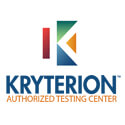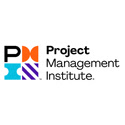Networking with Windows Server 2016 (70-741)
About This Course
The Networking 70-741 with Windows Server 2016 certification course covers all the important networking skills and knowledge required to support, configure, deploy and design Windows Server 2016 in most of the enterprise IT environments. The course also covers fundamentals of TCP/IP, remote access and advance content like Software Defined Networking.
The Networking 70-741 certification is the first part of the three part series required for passing the MCSA Windows Server 2016 certification exam. The coursework is intelligently designed keeping in mind the concepts and topics covered in the MS 70-741 exam. The course is beneficial for IT people who are looking to upgrade their knowledge about networking with Windows Server 2016 and also for the ones willing to appear for the 70-741 exam.
In addition, the 70-741 exam is aimed towards network administrators looking to reward their existing knowledge as well as learn more about latest networking technologies and functionalities in Windows Server 2016 environment.
Who Should Attend This Course
- This course is apt for IT professionals with some amount of prior experience in IT environments involving network implementation and operations.
- It will help professionals learn insights into advanced and core networking technologies within Windows Server 2016.
- Network administrators looking to upgrade their skills and explore new networking technologies and functionalities in Server 2016 are advised to take up this course.
- IT professionals looking to appear for the 70-741 exam can also take up this course, since it covers all the essential topics and concepts required to pass this vital exam.
Why This Course
The Networking 70-741 with Windows Server 2016 certification course covers all the important topics and concepts required to pass the 70-741 exam. This includes support, configuration, deployment and designing for Windows Server 2016.
Post the completion of this course, you will:
- Understand Domain Name System (DNS)
- Learn to implement IPAM and DHCP
- Learn to establish remote access and network connectivity
- Learn to deploy distributed and core network solutions
- Learn to design advanced network infrastructures
Course Objectives
- Implement DNS
- Implement IPAM and DHCP
- Implement Remote Access and Network Connectivity
- Implement Distributed and Core Network Solutions
- Implement an Advanced Network Infrastructure
Course Prerequisites
- Professionals interested for the Networking 70-7410 course should have prior experience of networking.
- You should also possess some understanding about tasks pertaining to networking functionalities and features within Windows Server 2016.
- You also should have some knowledge about DNS, IPAM, DHCP, etc.
Course Benefits
Post the completion of this course, you will:
- Understand Domain Name System (DNS)
- Learn to implement IPAM and DHCP
- Learn to establish remote access and network connectivity
- Learn to deploy distributed and core network solutions
- Learn to design advanced network infrastructures





























